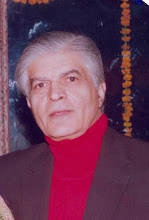PROVIDER FEED 2
The Complete Hospital Manual of Instruments and Procedures has
24 chapters given below is part of one chapter it is in Q&A format,
this aids self learning
OT COMPLEX MANAGEMENT
THE OT COMPLEX
Where should it be located?
All operating theatres should be centralized in one operating
Area rather than spread in the hospital, since this has
been shown to be the most economic approach;
For good engineering and
Focused nurse’s services,
Use of equipment and
For training of staff.
How is it designed?
Present trends in hospital design favor the low-rise building,
Two or three storey high.
An internal courtyard,
This enables maximum use of natural light and ventilation.
The operating department should be constructed separate from general traffic and air movement in the rest of the hospital. @
How to plan?
Movement of patients is made easier if at the time of planning
The requirement of the operating department surgical wards and
Intensive care unit (ICU) accidents and emergency departments (AED), and radio diagnostic (X-ray) departments are all considered. The laboratory facilities should also be close by.
How to Design and Control Environmental?
The term operating suite is sometimes used to designate the room used for surgery.
This is usually 400sq ft with minimum of 20 feet distance from cabinets and wall shelfs.
Special surgery suits cardiac, orthopedic neurosurgery and minimal invasive surgery and requires 600 sq ft. of space.
The support areas (changing rooms, scrub and utility
Rooms) are separate.
All operating suites are similar in design.
They are roomy enough to allow scrubbed staff to move around
Sterile equipment without the risk of contamination.
The design is such that dust is not trapped in areas that would be difficult to clean.
The surface vinyl material is free of joints and crevices.
The operating suite, is designed to insure maximum patient safety
* The floors, ceilings, and other surfaces are smooth, non-
Porous, and made of fireproof materials.
* The smooth surfaces allow thorough cleaning and prevent the
trapping of biologic material that could cause cross
Contamination
* All surface materials are made to withstand frequent washings
And cleaning with strong disinfectants
The ventilation system in the surgical suite has filters to
Prevent the contamination of the clean environment by
Air-borne bacteria. The entry of air high up vents
* The current requirements is, 15 exchanges of air per
Hour, 3 of which must be fresh air.
* Clean air exchange is possible if there is a positive pressure within the suite. This air is derived directly from the
Outside to avoid circulating air that might be contaminated
By passage through other areas of the hospital
* The humidity is also controlled to minimize static
Electricity and consequent ignition of any flammable
Solutions or objects used in the operating room.
* The ideal humidity level to achieve minimal static and also
Reduce bacterial growth is 30% to 55%.
The air temperature
Is maintained at 200C to 240C (680F to 750F).
* Emergency signal. The O.T. Management committee should
Consider installing an alarm system in case of a life
Threatening emergency. The activation of this alarm will
Save valuable time to mobiles. The emergency designate staff
And direct them to the site of the emergency.
What are the requirements of the O.T. TABLE?
The modern operation table is a mechanical apparatus capable of
Adjustment to give a variety of positions for a patient
Undergoing surgery.
- Most tables are designed to provide suitable positions for a
wide range of general surgical operations.
- It can be adapted for specialised procedures by the addition
Of accessories (neurosurgery, orthopedics).
- The introduction of complex operative procedures has required
The manufacture of more sophisticated operation with the table
Base unit positioned in the centre of the theatre on to which
Is fitted a removable top.
- This facilitates the transport of the operated patient.
An operation table which offers power operation,
Interchangeability of table top for ease of patient transport is
The table must have the following functions:
* Can be tilted downwards at the head and foot ends.
* Can be tilted from side to side.
* Can be elevated or lowered as a whole.
* Can be broken at hip level for gynaecological operation (e.g.
vaginal hysterectomy), renal surgery, and certain orthopaedic
operations.
* Can have the head and foot ends of the table removed to allow
for other attachments, eg. the application of a neurosurgical
frame.
@The complete hospital manual of Instruments and Procedures2005
Jaypee ISBN81-8061-546-4 for complete cover of this area
Any questions are sent to drmmkapur@gmail.com you will receive a response.
All posts are stored in archives for your access
Sunday, November 8, 2009
Subscribe to:
Post Comments (Atom)





No comments:
Post a Comment